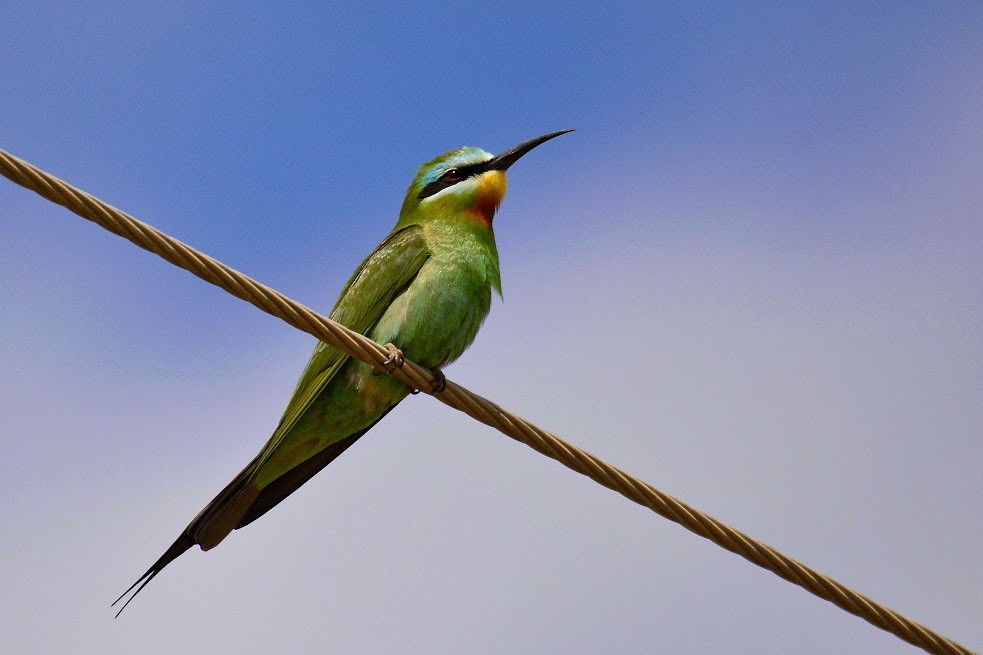European Bee-eater
A species of Typical Bee-eaters Scientific name : Merops apiaster Genus : Typical Bee-eaters
European Bee-eater, A species of Typical Bee-eaters
Botanical name: Merops apiaster
Genus: Typical Bee-eaters
Content
Description People often ask General Info
Description
This species, like other bee-eaters, is a richly coloured, slender bird. It has brown and yellow upper parts, whilst the wings are green and the beak is black. It can reach a length of 27–29 cm (10.6–11.4 in), including the two elongated central tail feathers. Sexes are alike. Female tends to have greener rather than gold feathers on shoulders. Non-breeding plumage is much duller and with a blue-green back and no elongated central tail feathers. Juvenile resembles a non-breeding adult, but with less variation in the feather colours. Adults begin to moult in June or July and complete the process by August or September. There is a further moult into breeding plumage in winter in Africa. 
Size
28 cm
Life Expectancy
5-10 years
Nest Placement
Burrow
Feeding Habits
European Bee-eater predominantly consumes a diet of flying insects, especially bees and wasps. European Bee-eater exhibits adept aerial hunting techniques, capturing prey mid-flight, often in the warmer parts of the day. European Bee-eater shows a peculiar adaptation for removing stingers and venom before consumption.
Habitat
European Bee-eater prefers warm, open areas with structural elements like river valleys and sparse trees. They are found in temperate zones, steppes, and Mediterranean climates, utilizing agricultural landscapes such as olive groves for their nesting and feeding needs. Soft-steep slopes are essential for burrow-nesting, while proximity to rich insect populations informs their migratory and seasonal habitats.
Dite type
Insectivorous
People often ask
General Info
Feeding Habits
Bird food type
Species Status
Not globally threatened.
